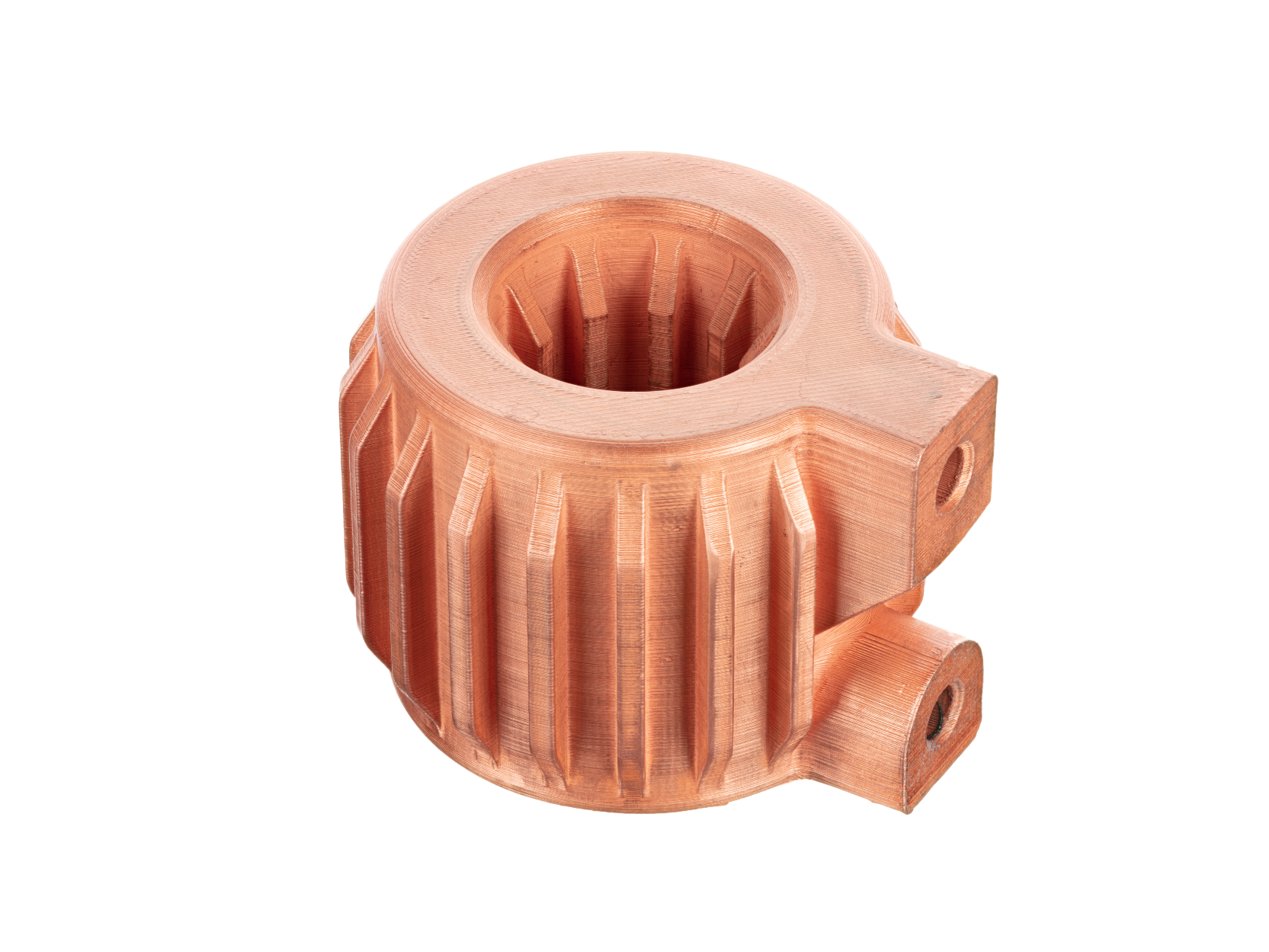Driving the Future: High-Efficiency Copper 3D Printed Battery Connectors for Electric Vehicles
Introduction
Copper 3D printing is driving innovation in electric vehicle (EV) power systems by enabling the production of high-efficiency, custom-designed battery connectors. Utilizing advanced metal 3D printing technologies such as Selective Laser Melting (SLM) and Direct Metal Laser Sintering (DMLS), premium copper alloys like Copper C101 and Copper C110 offer unparalleled electrical conductivity and thermal performance, crucial for lightweight, energy-efficient EV battery systems.
Compared to traditional stamping and machining, copper 3D printing for EV battery connectors enables faster prototyping, complex geometry integration, and optimized energy transfer in compact, high-current applications.
Applicable Material Matrix
Material | Electrical Conductivity (% IACS) | Thermal Conductivity (W/m·K) | Tensile Strength (MPa) | Purity (%) | EV Battery Connector Suitability |
|---|---|---|---|---|---|
≥99 | 390–400 | 220 | 99.99% | Ultra-high conductivity battery connectors | |
≥97 | 380–390 | 210 | 99.90% | Standard EV power connectors | |
75–80 | 300–320 | 450 | Alloyed | High-strength, load-bearing connectors | |
~80 | 275–300 | 350 | Alloyed | High-temperature battery applications | |
≥99.95 | 390–400 | 200 | 99.95% | Lightweight, precision battery links |
Material Selection Guide
Copper C101: With superior electrical conductivity (≥99% IACS) and maximum purity, C101 is ideal for low-resistance, high-efficiency battery connectors in EV packs where power density is critical.
Copper C110: Balancing excellent conductivity and mechanical performance, C110 is widely used for general EV power distribution components like busbars and terminal connectors.
CuCr1Zr: Provides enhanced mechanical strength (~450 MPa tensile) and good thermal conductivity, ideal for structural battery connectors subjected to high loads and mechanical stresses.
GRCop-42: Suitable for high-temperature environments such as EV fast-charging circuits, offering stable thermal and mechanical properties during extreme operating conditions.
Pure Copper: Ensures minimal energy loss and excellent flexibility for precision interconnections in lightweight, high-efficiency EV battery modules.
Process Performance Matrix
Attribute | Copper 3D Printing Performance |
|---|---|
Dimensional Accuracy | ±0.05 mm |
Density | >99.5% Theoretical Density |
Layer Thickness | 30–60 μm |
Surface Roughness (As-Printed) | Ra 5–12 μm |
Minimum Feature Size | 0.3–0.5 mm |
Process Selection Guide
Optimized Current Paths: 3D printing enables custom connector designs with integrated routing channels, curved profiles, and reduced resistance for maximum energy efficiency.
Superior Electrical and Thermal Conductivity: Materials like C101 minimize resistive losses and heat generation, which are critical for enhancing EV range and performance.
Lightweighting and Compact Integration: Complex, organic-shaped copper connectors minimize mass while fitting into tight battery pack layouts, improving vehicle efficiency.
Rapid Prototyping and Scalable Production: Fast iteration cycles support design validation for new battery architectures, while production scaling ensures supply chain agility.
Case In-Depth Analysis: C101 3D Printed High-Efficiency Battery Connectors for Electric Sports Car
A premium EV manufacturer required custom, low-resistance battery connectors to maximize efficiency and range in a new high-performance sports car. Using our copper 3D printing service with Copper C101, we produced connectors achieving ≥99% IACS conductivity and dimensional accuracy within ±0.05 mm. The topology-optimized designs reduced connector mass by 15% and improved current transfer efficiency by 12%, resulting in measurable increases in vehicle range and acceleration response. Post-processing included CNC machining and electropolishing to ensure optimal surface conductivity.
Industry Applications
Electric Vehicles (EVs)
Battery-to-inverter connectors for EV powertrains.
Custom busbars for battery modules and packs.
High-efficiency charging and discharging circuits.
Energy Storage Systems
Battery interconnects for grid-scale and residential energy storage.
High-current busbars for modular storage units.
Aerospace Electric Propulsion
Lightweight, high-conductivity battery connectors for electric aircraft propulsion systems.
Mainstream 3D Printing Technology Types for Copper Battery Components
Selective Laser Melting (SLM): Best for producing dense, high-conductivity copper connectors with precise geometries.
Direct Metal Laser Sintering (DMLS): Ideal for intricate connector designs and integrated mounting structures.
Binder Jetting: Suitable for low-cost, medium-volume production of moderate-conductivity copper interconnects.
FAQs
Which copper alloys are ideal for 3D printed EV battery connectors?
How does copper 3D printing improve energy efficiency in electric vehicle power systems?
What surface treatments optimize conductivity in 3D printed copper connectors?
Can copper 3D printed connectors handle high currents in fast-charging EV systems?
How does copper 3D printing accelerate the development of custom battery architectures?

